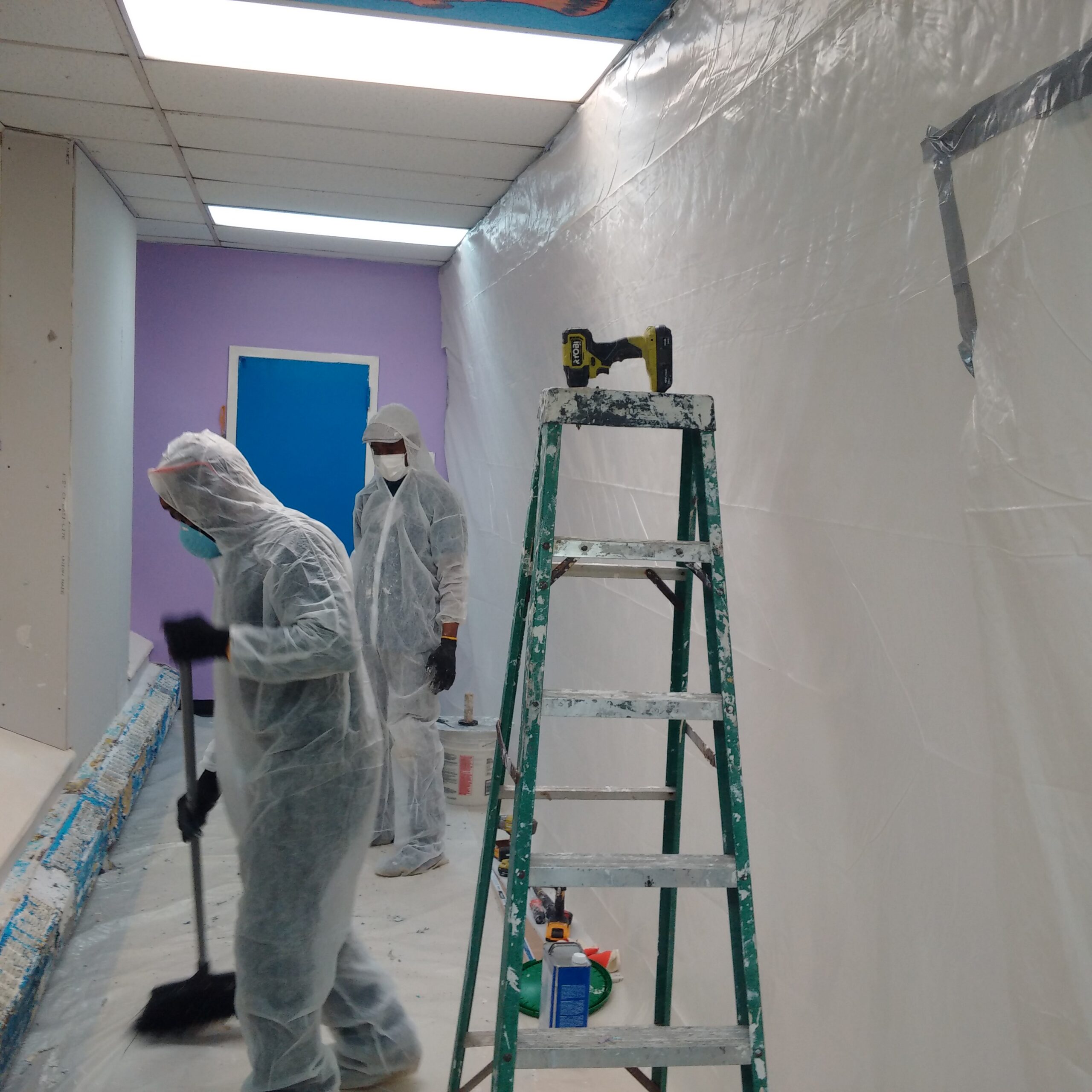Reliable DOH & HPD Lead Violation Removal in NYC-- Shield Your Property
Reliable DOH & HPD Lead Violation Removal in NYC-- Shield Your Property
Blog Article
Finest Practices for Ensuring Safe and Extensive Lead Offense Abatement
Resolving lead infraction abatement needs a multi-faceted approach to guarantee both security and compliance. Preliminary analyses utilizing advanced discovery methods such as XRF analyzers established the stage for a specific understanding of contamination degrees. Including proper containment strategies, consisting of impermeable barriers and HEPA filtering, coupled with making use of individual safety devices (PPE) for employees, creates the foundation of a safe and secure operation. Careful cleanup methods, featuring HEPA vacuuming and wet-wiping, are crucial. Yet, it's the last clearance process, including thorough examinations and lab testing, that really validates a lead-free atmosphere, ensuring lasting security. How do these techniques adjoin to guarantee extensive lead abatement?

Preliminary Assessment
Carrying out a preliminary analysis is an essential primary step in lead infraction abatement. This stage includes a thorough assessment of the home to identify the presence, extent, and certain places of lead-based risks. Certified specialists, such as certified lead assessors or risk assessors, should execute a comprehensive website evaluation, making use of tools like X-ray fluorescence (XRF) analyzers to precisely identify and measure lead focus in paint, dirt, soil, and water.
The analysis must also include an evaluation of the structure's history, previous reports, and any kind of issues or wellness issues reported by residents - Lead Removal Contractors. Recording the searchings for carefully is necessary, as these records develop the basis for developing a reliable abatement approach. A thorough analysis likewise involves tasting and lab evaluation, which are critical to validate the visibility of lead and overview subsequent actions
Moreover, it is essential to connect the results transparently to all stakeholders, consisting of property owners, tenants, and regulatory authorities. By ensuring that the first analysis is conducted with accuracy and rigor, professionals can lay a solid structure for a targeted and effective lead abatement process, inevitably protecting public health and making sure compliance with regulative standards.
Proper Control
Correct control is vital to stop the spread of lead impurities during reduction tasks. Properly handling containment lessens the risk of lead dirt and particles moving to non-work areas, thereby protecting both the environment and people outside the prompt work area.

Regular examinations of the control area are necessary to examine for violations or weaknesses in the obstacle. Any type of identified issues ought to be without delay resolved to maintain the honesty of the control. By adhering to these methods, abatement tasks can properly manage lead contamination and mitigate affiliated wellness dangers.
Worker Defense
Ensuring employee security is critical throughout lead reduction jobs to stop occupational exposure to harmful click site lead bits. Important actions include making use of personal protective equipment (PPE) such as respirators, handwear covers, and full-body matches especially made to obstruct lead dirt and fumes. Workers must undergo detailed training on the appropriate use and upkeep of PPE, consisting of healthy screening for respirators to ensure maximum effectiveness.
Design controls, such as local exhaust air flow systems, are essential in reducing airborne lead concentrations in the workplace. Administrative controls need to likewise be carried out, including restricting the duration of exposure and turning workers to minimize individual direct exposure times. Routine medical monitoring and organic tracking are indispensable for very early detection of lead absorption, allowing timely intervention and therapy.
Furthermore, developing a decontamination method is important. Employees must adhere to rigorous purification procedures prior to breaks and at the end of their shift to stop lead dirt from being lugged outside the workplace. This consists of thorough hand and face washing with lead-specific cleaner and altering out of infected clothing.
Thorough Cleaning
Preserving a safe workplace expands past worker defense and includes precise clean-up to make certain lead fragments are thoroughly gotten rid of from the website. The process of careful clean-up is important in protecting against the recontamination of the moderated area and guarding both existing and future occupants.
To accomplish a thorough cleanup, all workplace should be methodically decontaminated. This includes the use of specialized HEPA (High-Efficiency Particulate Air) vacuum cleaner cleansers and wet-wiping methods to record and eliminate fine lead dust that may have chosen surfaces. It is necessary to clean up all straight surface areas, consisting of floors, home window sills, and countertops, as well as upright surface areas that might have trapped lead particles.
Employees should use ideal individual safety devices (PPE) throughout cleaning to prevent direct exposure to residual lead dust. Utilized cleaning products such as wipes, sponges, and mop heads need to be dealt with in accordance with harmful waste disposal regulations.

Last Clearance
Final clearance is the crucial concluding phase of lead reduction that figures out whether the site is risk-free for reoccupation. This essential step involves extensive inspection and screening to verify that all lead risks have been effectively removed.

Last clearance screening not only safeguards future occupants but additionally makes certain conformity with local, state, and government laws. In addition, it acts as a recorded recognition of the abatement professional's adherence to sector best practices. Making sure a comprehensive and successful final clearance is crucial in guarding public health and cultivating count on in the abatement procedure.
Conclusion
Making sure secure and complete lead offense reduction necessitates a diverse technique including preliminary evaluations with advanced detection resource techniques, efficient containment techniques, rigid worker protection protocols, and precise cleaning procedures. The final clearance phase, featuring detailed evaluations and laboratory testing, is vital to validate conformity with EPA requirements. Adherence to these ideal practices ensures a safe setting for owners, alleviates health risks, and promotes regulative requirements, thus advertising public health and wellness and security in lead-affected locations.
Report this page